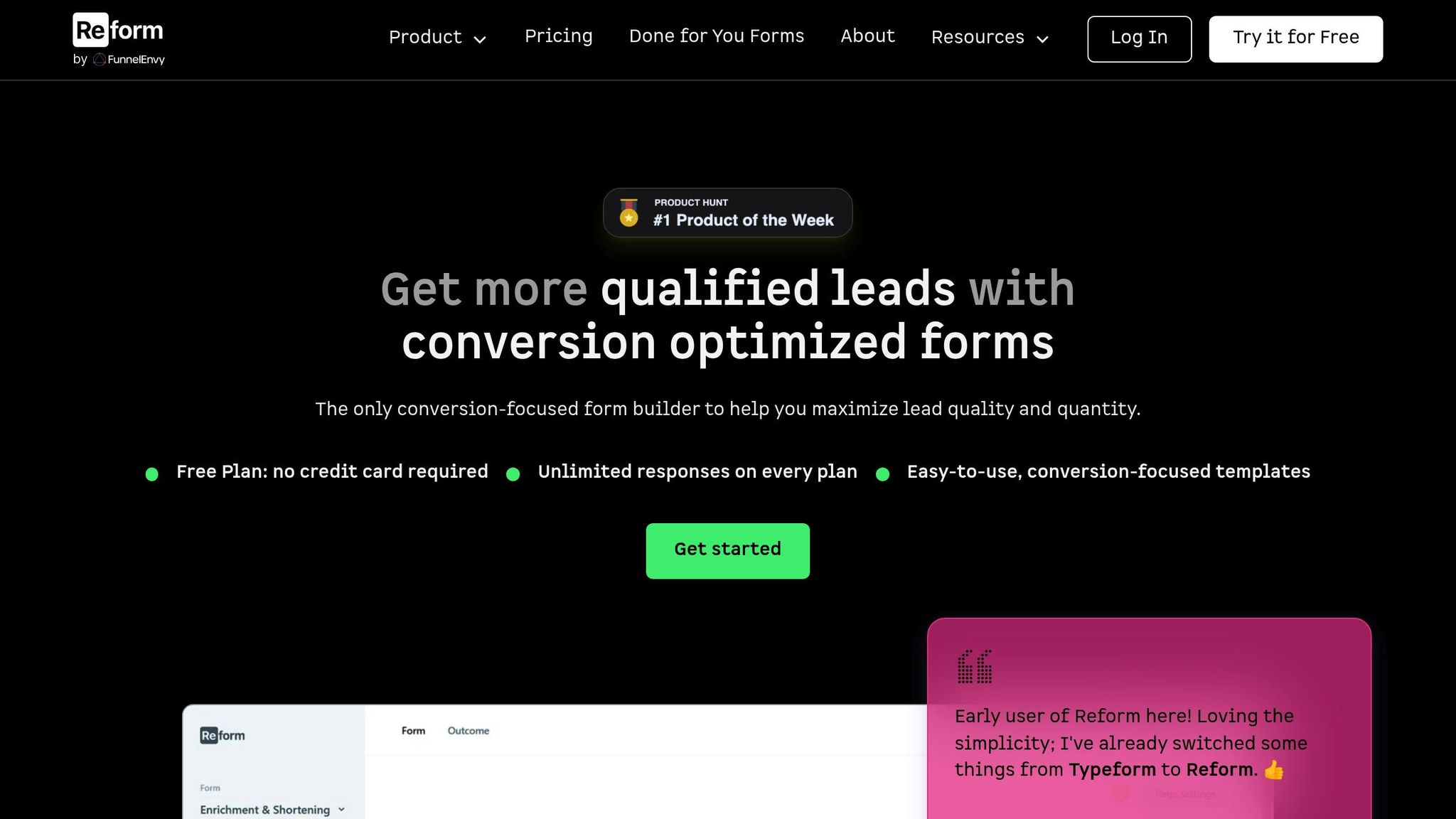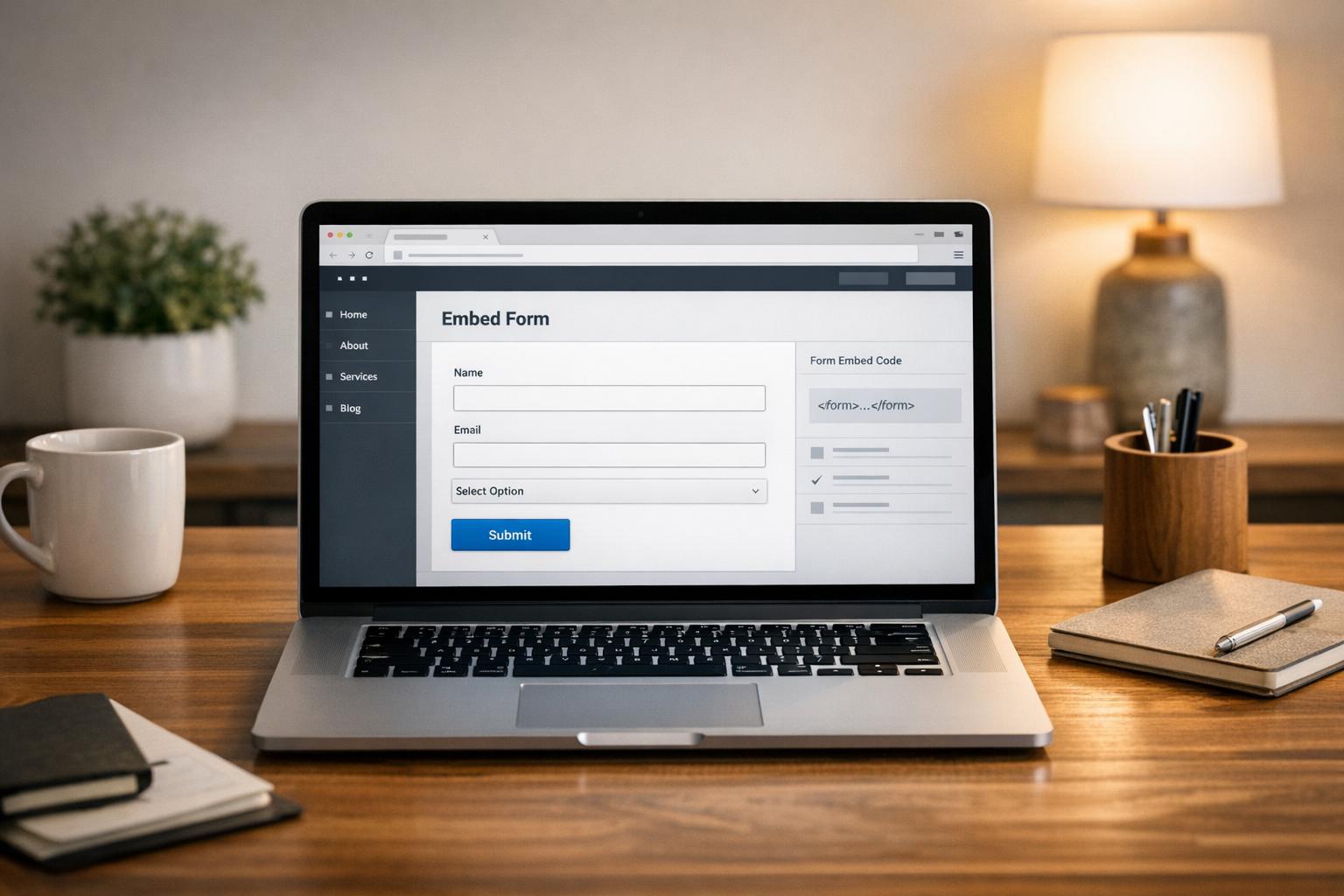Cross-Border Data Monitoring: Best Practices 2025

Managing cross-border data transfers in 2025 has become more complex due to evolving global privacy laws like GDPR, China's PIPL, and U.S. state regulations. Non-compliance risks hefty fines, reputational damage, and operational challenges. Here's how businesses can stay compliant and secure:
- Map and Classify Data: Identify, categorize, and document data flows for better visibility and risk management.
- Leverage Standard Contractual Clauses (SCCs): Ensure data transfer agreements align with legal requirements and include safeguards.
- Automate Data Flow Monitoring: Use tools for real-time tracking, compliance checks, and breach prevention.
- Encrypt Data and Control Access: Secure data in transit and at rest with encryption and role-based access protocols.
- Conduct Regular Audits: Periodically review processes to identify gaps and improve compliance.
- Train Employees: Educate staff on data privacy laws and secure handling practices.
- Use Secure Form Tools: Platforms like Reform ensure compliance when collecting and transmitting data.
By adopting these practices, businesses can navigate the regulatory landscape, protect data, and maintain smooth global operations.
Privacy Beyond Checkmarks: Navigating Cross-Border Data Transfers
1. Map and Classify Your Data Properly
Start by thoroughly mapping and classifying your data. Identify the type of data you have, where it’s stored, how it’s processed, and who has access to it. This step not only improves visibility but also helps you address potential risks tied to cross-border data transfers. Laying this groundwork is crucial for implementing automated monitoring systems and establishing strong security measures down the line.
2. Use Standard Contractual Clauses (SCCs) Correctly
Standard Contractual Clauses (SCCs) play a crucial role in protecting personal data during cross-border transfers. They establish clear responsibilities for both data exporters and importers, minimizing risks and promoting accountability.
Staying Compliant and Monitoring Effectively
Strong contractual safeguards are essential for keeping up with changing international data protection regulations. By clearly outlining reporting and audit duties, SCCs make it easier to monitor data practices and avoid compliance gaps. These measures not only help you stay on the right side of the law but also improve your ability to respond to potential risks.
Keeping Up with Changing Requirements
SCCs aren't static - they can be updated or paired with additional technical and organizational measures. This adaptability ensures that your data transfer practices stay in step with evolving regulatory demands, supporting better risk management over time.
Strengthening Risk Management
By requiring incident notifications and protecting the rights of individuals, SCCs help ensure quick action in the event of a breach. This approach not only safeguards data but also reinforces overall security practices.
3. Set Up Automated Data Flow Monitoring
Manually tracking cross-border data transfers is practically impossible. That's where automated monitoring systems come in. They offer real-time insights into where your data is going, how it’s being handled, and whether those transfers align with legal requirements.
Compliance with Global Regulations
Automated monitoring systems play a crucial role in ensuring compliance with laws like GDPR, CCPA, and China's PIPL. These systems continuously track data movements, flagging transfers that lack the necessary legal bases or safeguards.
They also maintain detailed logs that auditors and regulators often require. These logs show exactly when data was transferred, its destination, and the legal basis for the transaction.
For businesses operating across multiple countries, data mapping automation is a game-changer. Instead of manually documenting complex data flows, these tools automatically discover and catalog movements in real time. This ensures your compliance records are always up-to-date and ready for scrutiny.
Efficiency in Monitoring and Managing Data Flows
Automated systems take the uncertainty out of data governance. With intuitive dashboards, they provide a clear view of data flow patterns, pinpoint bottlenecks, and flag compliance risks before they escalate into bigger problems.
These tools integrate seamlessly with your existing infrastructure. They can automatically encrypt data, ensure it follows approved routes, and generate comprehensive compliance reports - tasks that would otherwise take weeks to complete manually.
Real-time alerts are another key feature. They notify your team of unauthorized transfers or deviations from established policies, allowing you to address issues immediately. This quick response capability helps prevent minor problems from spiraling into major compliance violations.
Scalability and Adaptability to Evolving Legal Frameworks
As regulations evolve, automated monitoring systems can be updated to reflect new requirements without requiring a complete overhaul of your compliance processes. Their rule-based engines adjust monitoring criteria as laws change or new regulations come into play.
These systems also grow with your business. As you expand and generate new data flows, they adapt to monitor them without the need for constant manual adjustments.
Moreover, machine learning capabilities can analyze patterns, predict compliance risks, and enhance your ability to stay ahead of regulatory changes. This flexibility ensures that your monitoring efforts remain aligned with your business growth and legal obligations.
Effectiveness in Risk Management and Breach Prevention
Automated monitoring provides around-the-clock oversight that human teams simply can’t match. These systems detect unusual data movements that could signal breaches or unauthorized access.
When integrated with your incident response protocols, they can quarantine suspicious transfers and alert your security team immediately. This rapid response minimizes the impact of breaches and ensures compliance with regulatory notification timelines.
4. Apply Encryption and Access Controls
Once you've laid the groundwork with precise data mapping and strong contractual safeguards, encryption becomes a critical layer in protecting cross-border data transfers. Think of encryption as the backbone of your defense strategy - ensuring that sensitive data remains secure throughout its journey. Without proper encryption and access controls, even the best monitoring systems can fall short.
Compliance with Global Regulations
Global regulations like GDPR, PIPL, and CCPA require technical measures such as encryption to secure cross-border data transfers. These laws don't just suggest encryption - they make it a core requirement.
By encrypting data during transfers, you're addressing multiple compliance principles at once. For example, encrypted data is unreadable if intercepted, which supports data minimization goals. However, encryption isn't a catch-all solution. Recent guidance from the U.S. Department of Justice highlights that restrictions on cross-border transfers still apply, even when data is encrypted, anonymized, or pseudonymized. This underscores the need to use encryption as part of a larger compliance framework.
Effectiveness in Risk Management and Breach Prevention
Encryption does more than tick regulatory boxes - it actively reduces risks. When data is encrypted, it stays unreadable even if intercepted, whether it's in transit or at rest. As sensitive information moves across borders and through various networks, encryption ensures that only those with the correct decryption keys can access it.
Pairing encryption with role-based access controls strengthens your security posture further. These controls limit access to sensitive data based on specific job roles, reducing the chances of internal breaches. They also align with data residency requirements, keeping your compliance efforts on track.
Specialized encryption tools strike a balance between strong security and usability. These tools protect data throughout its transfer while allowing authorized users to access what they need to do their jobs.
Don't forget to extend encryption to your data backups. This step adds an extra layer of protection and helps demonstrate your commitment to maintaining compliance. By integrating encryption into every stage of your data management process, you create a comprehensive shield against potential risks.
sbb-itb-5f36581
5. Perform Regular Audits and Compliance Checks
Regular audits act as a vital checkpoint, helping to spot compliance gaps before they become significant problems. Think of them as a safeguard that complements automated monitoring and encryption controls mentioned earlier.
Keeping Up with Regulatory Standards
Audits are a way to prove you're playing by the rules. By verifying that your internal controls and documentation align with regulatory requirements, they demonstrate accountability and help build trust with stakeholders.
Boosting Data Monitoring Efficiency
Audits aren't just about meeting regulations - they also improve how your operations run. They help identify inefficiencies, making it easier to address flagged issues quickly. Plus, having well-organized audit trails means you can respond faster to regulatory inquiries, reducing potential disruptions to your business.
Staying Aligned with Changing Regulations
As data protection laws evolve, your audit framework needs to keep up. Using standardized checklists ensures you're consistently meeting compliance requirements across different regions while also staying up to date with new legal standards.
Reducing Risks and Preventing Breaches
Audits act as an early warning system by reviewing access logs and security measures to spot vulnerabilities. Zeroing in on high-risk areas - like privileged access, third-party integrations, and sensitive data transfers - helps you address issues quickly through established corrective actions. Tracking key metrics over time also supports ongoing improvements in your data monitoring processes.
6. Train Staff on Data Transfer Rules
Automated tools like monitoring systems and encryption are essential for safeguarding data transfers, but they can only go so far. The real backbone of secure cross-border data transfers is a well-trained team. Without a solid understanding of data transfer rules, even the best technology can't fully protect against human missteps. Training your staff fills the gaps left by technology and strengthens your overall compliance strategy. Let’s explore how compliance, efficiency, adaptability, and risk management all come into play.
Compliance with Global Regulations
Training programs should focus on the key data protection laws that govern cross-border transfers. For instance, under GDPR, organizations must ensure adequate safeguards for data sent outside the EU. Similarly, the CCPA requires transparency about how data is shared with third parties, while China’s PIPL introduces strict data localization rules for critical information infrastructure operators.
To make these laws relatable, training should incorporate practical examples. Employees need to understand scenarios where cross-border data transfers occur, such as using international cloud services, sharing employee details with global offices, or leveraging analytics tools hosted in other countries. Staff should also learn to distinguish between jurisdictions that meet GDPR's adequacy standards and those that require additional measures, like Standard Contractual Clauses.
Efficiency in Monitoring and Managing Data Flows
Well-trained staff significantly improve the efficiency of monitoring and managing data flows. By following established procedures and accurately categorizing data, employees can enhance the effectiveness of automated monitoring tools. Training should also cover your organization’s data classification system, helping staff understand which types of data require specific approvals and when legal or compliance teams need to be consulted.
Adapting to Changing Legal Landscapes
With data protection laws evolving rapidly, training programs must be flexible and scalable. Modular training allows for quick updates when regulations change. Tailoring these modules to specific roles is also key. For example, marketing teams might focus on consumer consent, while IT and HR staff dive into data handling and privacy principles like minimization and purpose limitation. Regular refresher sessions - perhaps every quarter - keep everyone up to speed on regulatory updates, internal policy changes, and lessons learned from past compliance challenges.
Strengthening Risk Management and Breach Prevention
Educated employees play a vital role in preventing breaches and managing risks. When staff understand the vulnerabilities associated with different data transfer methods, they’re more likely to adopt secure practices and report potential issues promptly. Training should also include clear instructions for responding to incidents, such as unauthorized data transfers or handling data subject requests. A workplace culture that prioritizes data protection encourages employees to escalate issues as soon as they arise, enabling quicker resolutions and minimizing risks. Regular training ensures your risk management approach stays robust as threats and regulations evolve.
7. Use Secure Form Tools like Reform

When it comes to protecting sensitive information, secure form tools play a crucial role by safeguarding data right at the collection point. Online form submissions often cross international borders, which can expose organizations to compliance challenges and potential data breaches.
Compliance with Global Regulations
Form builders need to adhere to international privacy laws like GDPR, CCPA, and PIPL. These regulations require organizations to ensure transparency, obtain explicit consent, and often localize data storage.
Reform addresses these requirements with features like email validation, spam prevention, and conditional routing. These tools ensure that data submissions align with global standards, much like encryption and automated monitoring systems do for stored data. Additionally, Reform’s analytics provide real-time insights into submission patterns, enabling organizations to identify and address compliance risks before they become significant issues.
Streamlined Data Oversight and Management
Traditional forms often result in fragmented data, making it difficult to monitor and manage information that crosses borders. Reform eliminates this problem by integrating with CRM and marketing tools, creating unified data flows. This complements automated systems designed to track cross-border transfers, ensuring smoother oversight.
Reform's multi-step forms and conditional routing features ensure that only essential data is collected, reducing the amount of information subject to cross-border regulations. The platform’s lead enrichment capabilities validate and enhance data during collection, minimizing the need for additional processing or verification through third-party services.
Adapting to Changing Privacy Laws
Data privacy laws are constantly evolving, and staying compliant can be a moving target. For instance, the Global Cross Border Privacy Rules (CBPR) system, introduced on June 2, 2025, provides a framework to manage the growing complexity of international data standards.
Reform’s no-code platform allows teams to quickly adapt to new legal requirements by updating consent forms and data handling processes. For more specific needs, the platform supports custom CSS and JavaScript, offering flexibility to meet jurisdictional compliance demands.
Enhancing Security and Reducing Risks
Data breaches often occur during the collection process, where security measures may not be as robust as those protecting stored data. Reform addresses this vulnerability with multiple layers of protection, including email validation, spam prevention, and secure transmission protocols.
The platform also tracks abandoned submissions to flag suspicious activity, such as potential data harvesting attempts. Access controls ensure that only authorized personnel can handle collected data, reducing the risk of insider threats. These features form a comprehensive approach to securing data at its most vulnerable point - during collection - while supporting compliance with international standards for cross-border data security.
Comparison Table
The Schrems II decision has significantly impacted cross-border data transfers, requiring individual Transfer Impact Assessments (TIAs) or Transfer Risk Assessments (TRAs) for each transfer using Standard Contractual Clauses (SCCs). This has added a new layer of complexity to compliance efforts. As previously outlined in our SCC best practices, these regulatory updates call for heightened diligence.
| Safeguard/Tool | Key Fact |
|---|---|
| Standard Contractual Clauses (SCCs) | Individual TIAs/TRAs are now mandatory following the Schrems II ruling. |
These changes emphasize the need to stay vigilant as the regulatory framework for cross-border transfers continues to evolve.
Conclusion
Effective monitoring forms the backbone of securing cross-border data, especially as businesses look ahead to 2025. With regulations evolving at a rapid pace, companies must stay agile and refine their compliance strategies to keep up.
The seven practices discussed earlier provide a well-rounded approach, focusing on key areas like visibility, adherence to legal frameworks, real-time oversight, security measures, compliance checks, and employee readiness. Leveraging technology - such as secure tools like Reform - can simplify data collection processes and minimize errors. By adopting strong monitoring systems now, businesses can stay ahead of regulatory changes, reducing the need for reactive fixes and avoiding costly penalties. Prioritizing training, secure platforms, and proactive systems today ensures both compliance and a competitive edge in the dynamic landscape of tomorrow.
FAQs
How are Standard Contractual Clauses (SCCs) evolving to address new international data protection laws?
Standard Contractual Clauses (SCCs) have been revised to better align with stricter international data protection laws, including the updated GDPR regulations introduced in 2025. These revisions aim to improve transparency, reinforce the rights of individuals, and offer clearer instructions for handling cross-border data transfers.
The updated SCCs address previous shortcomings in the rules, ensuring that organizations outside the EEA managing GDPR-regulated data stay compliant. They also reflect a broader global push to strengthen data transfer protections, as seen with new laws like the UK's Data (Use and Access) Act 2025. These changes are essential for businesses striving to confidently navigate an increasingly complex regulatory environment.
What are the main advantages of using automated systems to monitor cross-border data transfers?
Automated systems for overseeing cross-border data transfers bring a host of benefits, such as increased efficiency, precision, and better compliance management. By automating processes like monitoring data flows and creating reports, these systems help minimize human error, save valuable time, and cut down on operational expenses.
Additionally, they strengthen risk management by providing real-time updates and ensuring comprehensive oversight across various jurisdictions. This becomes especially valuable for businesses dealing with intricate international regulations, helping them stay compliant while simplifying global operations.
Why is employee training important for complying with global data privacy laws?
Employee training plays a key role in meeting global data privacy laws by giving team members the tools they need to manage sensitive information responsibly and follow legal guidelines. With the right training, companies can minimize the chances of accidental breaches, which could result in hefty fines, damage to their reputation, or a loss of customer confidence.
Ongoing training keeps employees up to date on changing regulations and emphasizes their responsibilities in protecting personal data. It also reflects a company’s dedication to compliance, which is crucial for adhering to frameworks like GDPR and other international standards. Taking this proactive step protects both the organization and the people it serves.
Related Blog Posts
Get new content delivered straight to your inbox

The Response
Updates on the Reform platform, insights on optimizing conversion rates, and tips to craft forms that convert.
Drive real results with form optimizations
Tested across hundreds of experiments, our strategies deliver a 215% lift in qualified leads for B2B and SaaS companies.


.webp)



